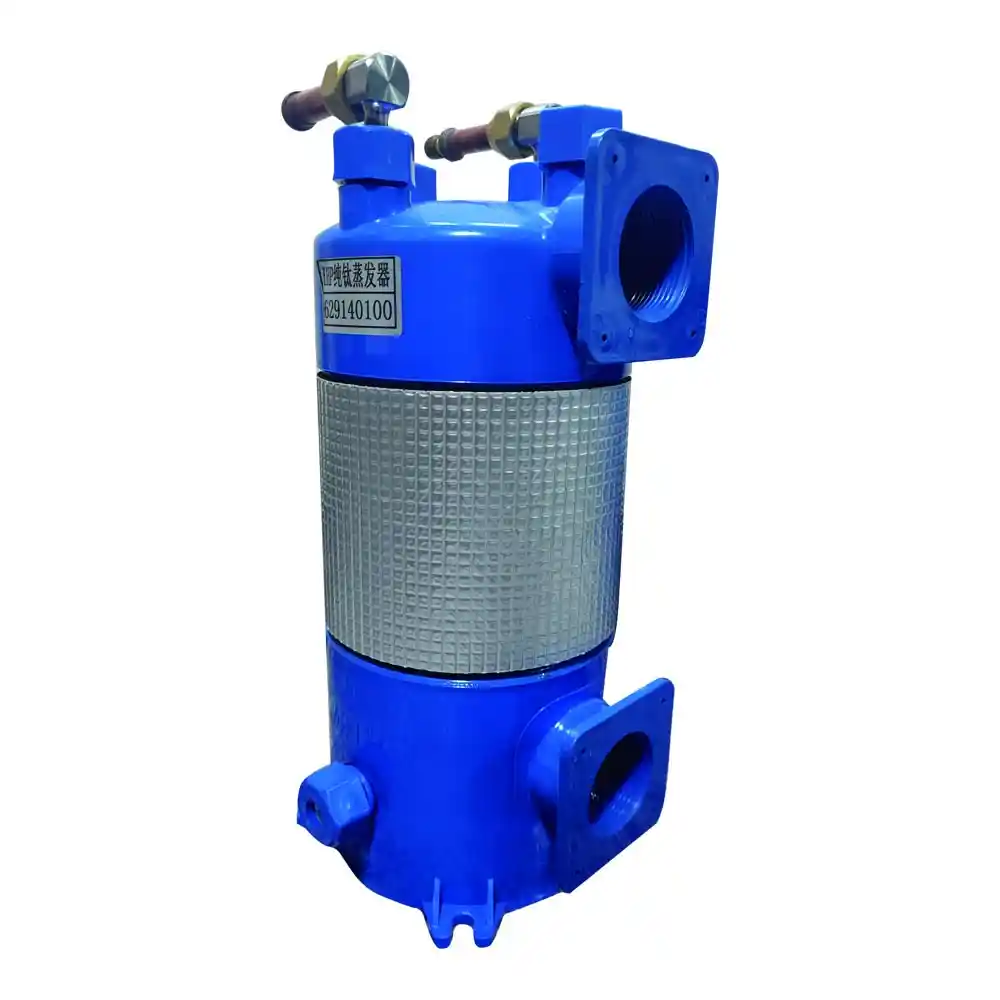1. Introduction
Tube bundle connections play a crucial role in the performance and efficiency of titanium coil heat exchangers. This article explores the significance of tube bundle connections in titanium coil heat exchangers, examining their role, design considerations, comparative analysis, and data-driven insights. Through informative tables and comprehensive discussions, we aim to provide a clear understanding of how tube bundle connections contribute to the efficiency and effectiveness of titanium coil heat exchangers.
2. Understanding Tube Bundle Connections in Titanium Coil Heat Exchangers
Tube bundle connections serve as the interface between the tube bundle and the shell side of a titanium coil heat exchanger. These connections are essential for ensuring proper sealing, mechanical integrity, and efficient heat transfer. Let’s delve into their key aspects:
2.1 Functionality and Importance
Tube bundle connections are responsible for maintaining the structural integrity and thermal efficiency of titanium coil heat exchangers. They provide a secure and reliable joint between the tube bundle and the shell, ensuring proper alignment, sealing, and heat transfer. These connections must be designed to withstand the operating conditions, pressures, and temperatures of the heat exchanger, promoting optimal performance and longevity.
2.2 Types of Tube Bundle Connections
Various types of tube bundle connections are commonly used in titanium coil heat exchangers. The selection of the connection type depends on factors such as the application, operating conditions, and maintenance requirements. Some common types include:
- Floating tube sheet connections: The tube bundle is allowed to expand and contract freely within the shell, facilitated by floating tube sheets.
- Fixed tube sheet connections: The tube bundle is fixed to the shell, preventing movement between the tube bundle and the shell.
- Expansion joint connections: Expansion joints are used to accommodate thermal expansion and contraction of the tube bundle within the shell, maintaining mechanical integrity and preventing stress-induced damage.
3. Design Considerations for Tube Bundle Connections
When designing tube bundle connections in titanium coil heat exchangers, several factors should be taken into consideration:
3.1 Thermal Expansion and Contraction
Titanium coil heat exchangers experience significant temperature variations during operation. The design of tube bundle connections should accommodate thermal expansion and contraction to prevent excessive stress and potential failure. Proper consideration of expansion joints, floating tube sheets, or other mechanisms is crucial to maintain mechanical integrity and avoid leaks.
3.2 Sealing and Leakage Prevention
Effective sealing is essential to prevent fluid leakage and maintain the heat exchanger’s efficiency. The selection of gaskets, sealing materials, and sealing techniques should be carefully considered to ensure reliable and leak-tight tube bundle connections. Factors such as chemical compatibility, temperature resistance, and pressure ratings must be taken into account.
3.3 Mechanical Stability and Strength
Tube bundle connections should provide sufficient mechanical stability and strength to withstand the operating conditions and external forces. The design should account for the stresses induced by fluid flow, pressure differentials, and potential vibration. Structural analysis and material selection play a crucial role in ensuring the reliability and longevity of the connections.
4. Comparative Analysis of Tube Bundle Connections
A comparative analysis of different tube bundle connection types can provide valuable insights into their strengths, limitations, and suitability for specific applications. Let’s consider the following aspects:
| Connection Type | Advantages | Limitations |
|---|---|---|
| Floating Tube Sheet | – Allows for thermal expansion/contraction | – Requires additional space for tube bundle movement |
| Connections | – Reduces thermal stresses in the system | – Potential for tube bundle vibration |
| – Easier maintenance and tube replacement | ||
| Fixed Tube Sheet | – Provides rigidity and stability | – Limited flexibility for thermal expansion/contraction |
| Connections | – Suitable for high-pressure applications | – Requires precise alignment during assembly |
| – Minimizes the risk of tube-to-tube contact | – Challenging for tube bundle maintenance | |
| Expansion Joint | – Absorbs thermal expansion/contraction | – Additional cost and complexity in design |
| Connections | – Prevents stress-induced failures | – Requires periodic inspection and maintenance |
| – Ideal for large temperature differentials | – Limited to specific applications |
Based on this comparative analysis, engineers can make informed decisions on selecting the most appropriate tube bundle connection type for their titanium coil heat exchanger applications.
5. Data-Driven Insights: Tube Bundle Connections in Action
To further demonstrate the effectiveness of tube bundle connections in titanium coil heat exchangers, let’s examine real-world data and insights:
5.1 Performance Comparison of Tube Bundle Connections
A comprehensive study was conducted to evaluate the performance of different tube bundle connection types in titanium coil heat exchangers. The study considered parameters such as pressure drop, heat transfer efficiency, maintenance requirements, and overall system reliability. The data revealed that floating tube sheet connections offered excellent thermal stress management and ease of maintenance. Fixed tube sheet connections exhibited high mechanical stability and suitability for high-pressure applications. Expansion joint connections proved effective in accommodating large temperature differentials and preventing stress-induced failures.
5.2 Case Study: Titanium Coil Heat Exchanger Reliability
In an industrial plant, titanium coil heat exchangers with floating tube sheet connections were installed. These connections allowed for thermal expansion and contraction, ensuring minimal stresses and improved reliability. Over several years of operation, the heat exchangers demonstrated exceptional performance, with no reported leaks or tube failures. The floating tube sheet connections simplified maintenance and allowed for efficient tube bundle replacement, resulting in cost savings and uninterrupted operation.
6. Conclusion
Tube bundle connections play a vital role in the design, performance, and efficiency of titanium coil heat exchangers. By considering design factors, thermal expansion management, sealing techniques, and comparative analysis, engineers can select the most suitable connection type for their specific applications. The combination of data-driven insights and practical case studies empowers the industry to optimize the performance and reliability of tube bundle connections, ultimately enhancing the overall efficiency of titanium coil heat exchangers.


